Artists
Karlo Kacharava
Press release
Artist, poet, critic Karlo Kacharava (1964–1994) can be seen as a porous floodgate between eras and geographies, between artistic and social continental shifts straddling the outgoing 20th and incoming 21st centuries. His work helped pave the way for the emergence of one of the most vibrant art scenes in contemporary Eastern Europe—specifically, in Georgia—while remaining deeply entangled, both personally and politically, with the Soviet past, before Georgia became independent in 1991 for a second time after 1918. Waves of cultural and political ruptures from those periods and beyond are still present in Georgia today.
Yet, Kacharava’s practice could only flourish through his long-imagined version of the Western landscape—manifested in an avalanche of writings, paintings, and drawings, often all at once—which comprise his enduring legacy, left behind when he died at the young age of 30. This exhibition in Cologne, the first of LC Queisser’s new gallery dependance, serves as the first occasion to present only drawings and works on paper by the artist—the medium that combines the various angles which informed his practice in the most appropriate way. In parallel, the Rhineland was first an imaginary and later a more concrete fixpoint in Kacharava’s work, as we will see later.
To understand Kacharava’s position, a brief glimpse into his environment is essential. His apartment, which I had the opportunity to visit last autumn, serves simultaneously as genius loci, shrine, and time capsule. Located in a suburban area of Tbilisi within a Khrushchev-era multistory housing block, Kacharava lived there his entire life with his mother and younger sister. His sister, who now preserves his legacy, has left the furniture untouched since his untimely death in 1994, changing only the arrangement of his works displayed on the walls and tables. Bookshelves are filled with photographs, as well as countless art catalogues and literary works of Georgian, Russian, and European origin. Beneath its nostalgic mundaneness, it becomes clear that this apartment was the neuralgic point of Kacharava’s production.
Here, the “Man at the Factory”—to reference one of his drawings included in this exhibition—sorted and processed pieces of information that, especially in the waning years of the Soviet Union, were extremely difficult to obtain. Kacharava’s practice is overtly laden with visual and textual references: from Expressionists such as Georg Büchner and Ernst Ludwig Kirchner, to postwar figures like Joseph Beuys, Heinrich Böll, and George Maciunas, to the following generations of visual artists and poets, including Jörg Immendorff, Martin Kippenberger, Markus Lüpertz, Helmut Middendorf, A.R. Penck, and Sigmar Polke.
His references could easily extend to Georg Baselitz, Anselm Kiefer, Francesco Clemente, and Marguerite Duras, to name just a few, and critics such as Susan Sontag. Yet his vast panorama of West was not simply idolized. For Kacharava, it gained coherence primarily through its availability, and never through blind admiration. As curator and critic Irena Popiashvili aptly describes, Kacharava’s engagement stemmed from a “quest for esteemed camaraderie.” A founding member of the influential 10th Floor Group (established in 1986), Kacharava turned this distant yet intimately felt Western cosmos into a living archive of peers—constantly evoked and reconfigured anew with each drawing, but mainly in order to nurture and reflect the life in front of him in his immediate surroundings.
His practice was informed by a deep concern for his own artistic and personal origins. He embraced the formal language of Georgia’s artistic heritage while remaining critical of what he perceived as increasingly narcissistic tendencies in the times of transformation. Recurring figurative pieces show a wrestling with intimate themes, such as the death of his father when he was only two years old. Often entitled in German, these drawings reveal a fleeting mastery and nonchalant genius, capturing figures and constellations with just a few precise lines. Comments, phrases, names, words, and comic-like sequences overwrite any potential heroics in his source material. Instead, they foreground process over product—a conceptually driven lesson he may have absorbed from Fluxus (for Maciunas).
Steadily hovering between commenting and producing, it’s crucial to emphasize that Kacharava did not work from a naïve or self-taught position. He won early important prizes for his skills, was academically trained in both visual arts and art history, and worked at the Institute of Georgian Art until his death.
His oeuvre disarmingly and intelligently collapses and reverses the hierarchies between center and periphery—especially relevant today, when global and local identities are constantly renegotiated. In the late 1980s and early 1990s, when Kacharava undertook his first trip to Germany, the neo-expressionist forces within the Rhineland were already beginning to congeal between the poles of canonization and self-deconstruction. It might be no surprise that his 1991 exhibition and four-week work trip to Cologne turned into something of a disappointment—perhaps also because what he sought was already unfolding back home in Tbilisi. His apartment had long served as a hub and crosspoint for the circulation of knowledge and dialogue. Long before the “relational aesthetics” of the 1990s took root in Western discourse, Kacharava’s daily realities had given rise to a proto-networked space—an analog social media platform avant la lettre.
Kacharava’s legacy extends far beyond aesthetic innovation. It offers a critical commentary on the cultural transformations that accompanied the collapse of the Soviet Union and the emergence of today’s globalized art world. His work demonstrates how an artist can meaningfully engage with international artistic trends while retaining a distinctive local perspective. In a brief but prolific career, cut tragically short at thirty, Karlo Kacharava produced a body of work that continues to challenge our understanding of artistic exchange and cultural identity in increasingly interconnected times.
Martin Germann
Through
26 July 2025
Hours
Thu.–Fri. 14–18:00 Sat. 11–18:00